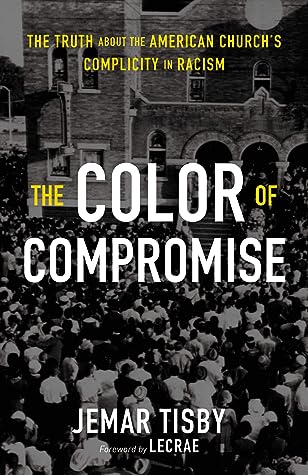More on this book
Community
Kindle Notes & Highlights
by
Jemar Tisby
Read between
September 2 - September 18, 2020
The refusal to act in the midst of injustice is itself an act of injustice. Indifference to oppression perpetuates oppression.
Beverly Daniel Tatum provides a shorthand definition: racism is a system of oppression based on race.
Another definition explains racism as prejudice plus power. It is not only personal bigotry toward someone of a different race that constitutes racism; rather, racism includes the imposition of bigoted ideas on groups of people.
Given the history, complicity is a weak word for describing how American Christianity has often interacted with race. As historian Carolyn DuPont describes it, “Not only did white Christians fail to fight for black equality, they often labored mightily against it.”
Critics will assert that the ideas in The Color of Compromise should be disregarded because they are too “liberal.”
In 1785, Lemuel Haynes became the first black person ordained by any Christian fellowship in America.
Black people in America recognized that the evil they suffered was imposed on them, not a result of their own actions. The enslaved recognized this injustice because they lived it every day. But they did not let the harm they endured hinder their hopes for a better future or extinguish their attempts at resistance. Enslaved blacks did not passively suffer abuse. Christianity, in fact, became a source of strength and survival, bringing hope to thousands of enslaved people.
Lincoln was far from a racial egalitarian. He objected to the expansion of slavery, but he was not initially interested in abolishing it, nor did he advocate for civil or social equality for black people.
The church “has no commission to construct society afresh . . . to re-arrange the distribution of its classes, or to change the forms of its political constitutions.”28 Thornwell’s vision of spirituality required the church, as an institution, to remain silent on the most critical social, political, and ethical question of the day.
Martin Luther King Jr. once said, “I think we’ve got to see that a riot is the language of the unheard.”
“Social justice and progress are the absolute guarantors of riot prevention. There is no other answer.”32
In 1971, the Southern Baptist Convention, the nation’s largest Protestant denomination, passed a resolution on abortion that called upon Southern Baptists “to work for legislation that will allow the possibility of abortion under such conditions as rape, incest, clear evidence of severe fetal deformity, and carefully ascertained evidence of the likelihood of damage to the emotional, mental, and physical health of the mother.”33
Graham serves as one of the faces of what historian John Fea calls the “court evangelicals,” those who publicly and consistently support Donald Trump as president despite a string of decidedly non-evangelical character traits.
Trump tapped into the latent sense among some evangelicals that they were losing their influence in American culture and politics.
The Trump campaign and presidency revealed just how tenuous the interracial coalition of Christians that had emerged in the past two and a half decades really was. The forty-fifth president did not produce the racial and political divide between black and white Christians, but he exposed and extended longstanding differences while revealing the inadequacy of recent reconciliation efforts.
New Freedom Schools would also teach everyday Christians how to get involved in activism. They would discuss current systemic injustices such as mass incarceration, police brutality, underfunded schools, and healthcare inequality. But they would go further. Freedom Schools would also highlight organizations that are already doing the work of reform.


